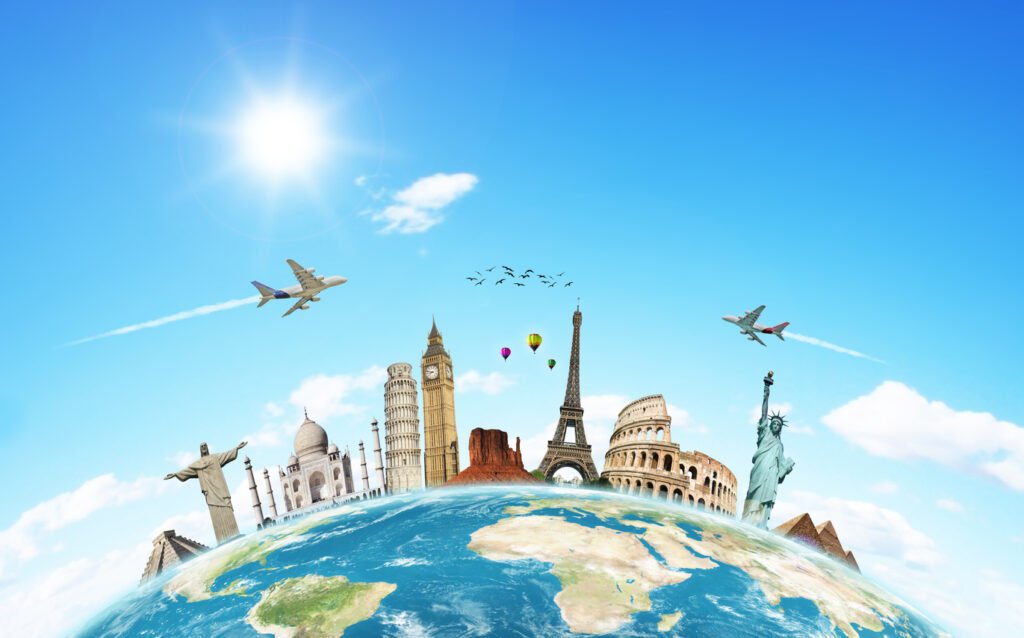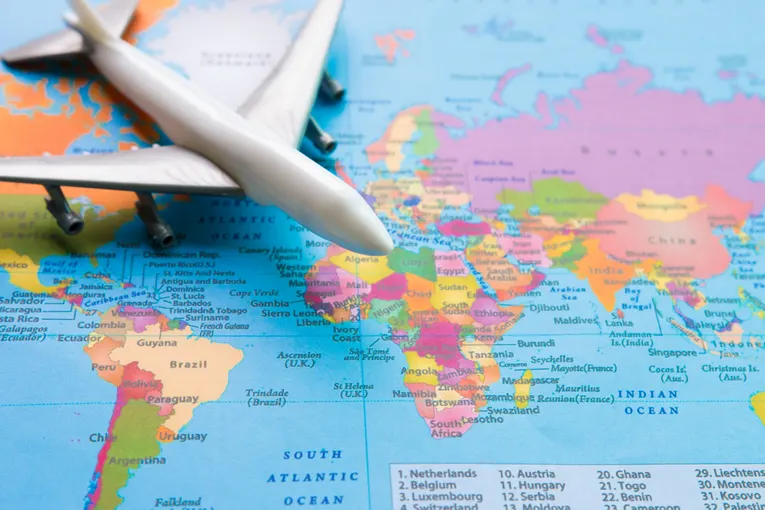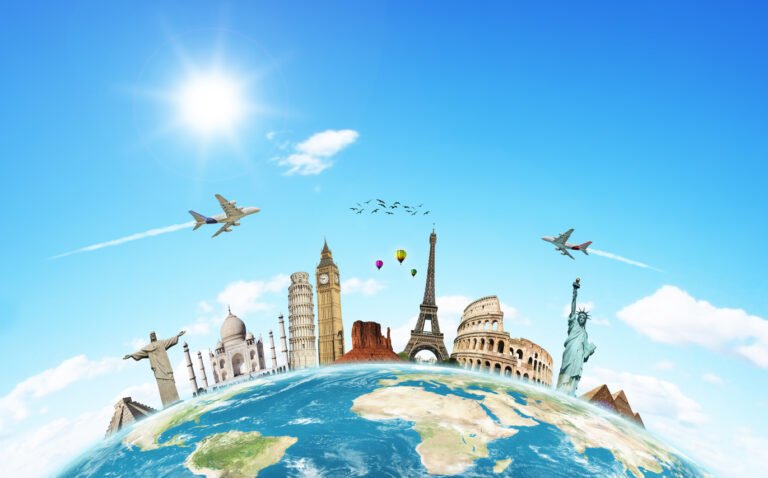Travel News is buzzing in 2025. Borders are shifting, new entry systems are rolling out, and traveler interests are changing fast. You will get up‑to‑date Travel News on border updates, visa rules, emerging destinations, and trends that matter. Whether you plan a trip next month or later this year, this guide will help you stay ahead.

1. Border Updates: What’s Changing in 2025
In 2025, many nations are redefining how they manage entry, border control, and visa policies. Here are the major shifts currently making headlines.
1.1 The EU’s New Entry/Exit System (EES)
One of the most significant changes in travel news this year is the EU’s rollout of the Entry/Exit System (EES). From October 12, 2025, non‑EU nationals entering the Schengen Area will have their passport data, fingerprints, and photographs recorded digitally.
- The EES aims to replace passport stamping and strengthen security controls.
- The full implementation is scheduled for April 10, 2026.
- In the transition period, passport stamping continues, but biometric checks begin at key entry points.
For travelers from the UK and other non‑EU states, EES means more formal border procedures. At places like Dover, Eurostar terminals, and other transport hubs, queues might lengthen as data capture systems are used.
1.2 Schengen Reinstating Border Controls
Although the Schengen Area is known for open internal borders, several member states have reintroduced temporary checks due to migration, security, or political pressure.
- Poland resumed border checks with Germany and Lithuania starting July 7, 2025, citing irregular migration concerns.
- France, Denmark, Italy, the Netherlands, Sweden, and others are also enforcing internal controls in 2025 for security reasons.
- These controls may last well beyond their initially planned periods, meaning travelers should assume that “borderless” may not always be seamless.
1.3 Changes in Visa & Travel Authorization Policies
- In the EU, the ETIAS (European Travel Information and Authorization System) is set to roll out (likely in late 2026), requiring visa‑exempt visitors to apply for authorization before travel.
- Bulgaria and Romania became full Schengen members from January 1, 2025, eliminating many internal border checks in those countries.
- In Bangladesh–India land travel, new rules since October 2025 require Bangladeshi travelers crossing via Benapole to fill an online arrival form before departure, which has reduced traffic.
- Some countries still maintain land border closures: for example, Azerbaijan is keeping its land borders closed until January 1, 2026, though air travel is allowed.
1.4 Political & Conflict‑Driven Border Risks
Travel news in 2025 also includes border tensions affecting travel:
- The Cambodia–Thailand border crisis escalated in mid‑2025 with military conflict, leading to crossing closures and disruptions.
- In the region, travel advisories have been issued, especially for flights and border crossings in affected zones. The Thai aviation authority urged passengers to monitor changing flight schedules between Cambodia and Thailand.
1.5 Regional Moves Toward Easier Cross‑Border Travel
Amid these tight controls, some regions are pushing in the opposite direction to attract tourism:
- The ASEAN tourism ministers are working to simplify cross‑border travel among Southeast Asian nations to boost regional tourism.
- In Malaysia, a new Border Control and Protection Agency (AKPS) has been formed to unify customs, immigration, and police functions and make cross‑border transit more streamlined.
2. Destination Trends & Hot Spots in Travel News 2025
While border policies make headlines, traveler interest is evolving, too. Here are some of the biggest destination trends shaping travel news in 2025.
2.1 Noctourism & Dark‑Sky Travel
One of the leading trends of 2025 is noctourism—tourism under the stars. In 2025, solar activity is expected to be high, making aurora viewings more intense. Destinations like Lapland, Iceland, Svalbard, and Norway’s Lofoten Islands are drawing night‑sky enthusiasts.
Museums, parks, and attractions are extending night hours, offering night walks, stargazing tours, and bioluminescent beach visits.
2.2 Frontier & Alternative Destinations
Travelers are more curious about offbeat, less crowded spots. Some notable trends:
- Albania is being promoted as a dupe for Greece: similar beauty with fewer crowds and lower costs.
- Guatemala is seeing a surge in bookings, thanks to its mix of nature, Mayan heritage, and relative accessibility.
- The Red Sea Project in Saudi Arabia is gaining attention: luxury island resorts and eco‑tourism developments are part of its appeal.
3. How Travel News Reflects Technology & Innovation in 2025
The way we travel is being reshaped by tech. Travel News in 2025 frequently covers new tools, systems, and experiences driven by innovation.
3.1 AI & Narrative‑Driven Itineraries
- Researchers are producing systems that generate narrative-guided itineraries, which connect attractions via storytelling and optimize time and cultural coherence.
- Tools like Roamify are browser extensions powered by large language models (LLMs). They fetch up‑to-date travel news, gather destination information, and craft custom plans.
- In travel news, AI is now being used beyond booking: to suggest local events happening during your stay, or adjust plans if conditions change.
3.2 Biometric & Digital Border Technologies
- The EES in the EU is part of a broader shift toward contactless and biometric border control.
- Smart border systems reduce human error, speed processing, and improve security via automated checks.
3.3 Social Media & Social Signals in Travel
- Travel decisions are increasingly driven by social media, with 61% of travelers now relying on feeds to find inspiration.
- LLMs and social media analytics reconstruct traveler expectations from user‑generated content (UGC).
- Destinations and brands paying attention to trending posts, hashtags, and micro‑influencer reach get early traffic boosts.
3.4 Data & Predictive Models
- Big data helps tourism boards and companies forecast which destinations will surge, which routes will be in demand, and where to allocate resources.
- AI predicts travel trends, such as peak interest in noctourism, “calmcations,” or set‑jetting.
- Optimization models assist airlines, hotels, and transport operators in adjusting supply in real time.
3.5 Immersive Tech & Augmented Experiences
- Virtual Reality (VR) previews of hotels, AR walkthroughs of sites, and mixed reality heritage tours are being more widely deployed.
- Some destinations integrate AR overlays on monuments to display history, multilingual info, or traveler tips.
- These immersive tools also feature in travel news stories when they launch or when destinations reimagine experiences.
4. Travel News 2025: Risks, Opportunities & What Travelers Should Do
In this new era, staying prepared is essential. Let’s explore both the challenges and how travelers can adapt.

4.1 Key Risks & Challenges
- Border volatility: Temporary controls may appear with little notice in regions like Europe or parts of Asia.
- Conflicting rules: Entry policies may differ between transit and destination countries.
- Crowding in emerging hotspots: As new destinations gain fame, rapid growth could stress infrastructure.
- Technology gaps: Some places may lag in digital systems, making travel less seamless.
- Safety risks in unstable zones: Regions with border conflicts (e.g., Cambodia–Thailand) require vigilance.
4.2 Opportunities & Advantages for Travelers
- First‑mover advantage: Visiting newly trending destinations before mass tourism arrives.
- Better deals: New routes, promotional offers, and infrastructure incentives.
- Unique experiences: Access to immersive, niche, or nocturnal tourism becomes possible.
- Smarter tools: AI, AR, and data make a trip more personalized and efficient.
4.3 Travel Tips in Light of 2025 Travel News
- Always check official border and visa updates before booking, especially if crossing multiple countries.
- Register for alerts from airlines or governments for sudden changes.
- Use flexible booking options (free cancellation or changeable tickets).
- Build in buffer days in case borders or flights change.
- Carry digital and physical backups of documents.
- Use AI itinerary planners or apps for real‑time adjustments.
- Prioritize destinations with good infrastructure and safety records.
- Explore less crowded seasons or off‑beat times (e.g, night tours, shoulder seasons).
- Respect local norms, especially in regions recovering from turbulence.
- Document and share your experiences: your insights might help future travelers.
5. Future Outlook: Where Travel News Is Heading
The patterns we see now suggest what the next wave of travel news may bring.
5.1 More Real-Time Border & Policy Alerts
News will focus on instant changes—temporary closures, health alerts, visa suspensions—requiring live tracking services and traveler push notifications.
5.2 Broader Use of Predictive Tools in Travel Journalism
Media outlets will increasingly use AI to forecast trends (next trending destination, next visa change) and tailor content per region or traveler persona.
5.3 Virtual & Hybrid Travel News Consumption
Live virtual tours and interactive maps within Travel Updates 2025 platforms.
5.4 Travel News as a Decision Tool
Travelers will consult news not just for updates but for planning: “Where should I go now? Where are restrictions easing?” News becomes a part of trip building.
5.5 Focus on Regenerative Tourism & Community Stories
Future travel news will not only report destinations but also how tourism impacts them—community voices, sustainability, and local benefits.
Conclusion
The global travel landscape is more dynamic than ever. From border updates like the EU’s new EES system to shifting visa policies, travelers must stay informed to avoid surprises. Meanwhile, emerging destinations like Albania, Guatemala, and regions offering dark-sky tourism are creating fresh opportunities for discovery.
Technology is not just enhancing the booking experience — it’s shaping how we travel, where we go, and how we stay safe. From AI-driven itineraries to biometric border checks, innovation is central to today’s travel news. And with growing interest in slow travel, calmcations, and set-jetting, it’s clear that traveler values are evolving too.










